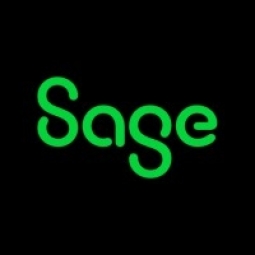公司规模
SME
地区
- America
国家
- United States
产品
- Sage 100 ERP Sales Tax by Avalara
技术栈
- Sage 100 ERP
- Sales Tax Automation Suite
实施规模
- Enterprise-wide Deployment
影响指标
- Productivity Improvements
- Cost Savings
技术
- 功能应用 - 企业资源规划系统 (ERP)
适用行业
- 零售
适用功能
- 销售与市场营销
- 商业运营
服务
- 系统集成
关于客户
Albert Lee Appliance 是一家家族企业,70 多年来一直销售冰箱、炉灶、洗衣机和烘干机等家用电器。Albert Lee 在西雅图拥有四家门店,是华盛顿州最大的独立家电经销商。该公司拥有 100 名员工。尽管该公司在其历史上经历了许多变化,但最近历史上最重要的变化可能是销售税立法的转变。这一转变似乎在一夜之间发生,要求 Albert Lee 从手动计算仅四个门店的销售税转变为计算数百个管辖区的销售税——所有这些都在华盛顿州内。
挑战
Albert Lee Appliance 是一家家族经营的电器经销商,在西雅图周边拥有四家门店。2008 年华盛顿州通过简化销售和使用税计划后,该公司面临巨大挑战。新法律将税源从发货地(Albert Lee 的一家门店)转移到目的地(Albert Lee 的客户门店)。过去只需进行少量手工税务计算,现在可能变成了数百项。该公司意识到其销售税工作将变得更加复杂。该公司的平均交易额约为 2,000 美元,这意味着州政府会定期对其进行审计。事实上,他们经常见面,以至于他们与几位审计员都以名字相称。
解决方案
为了应对新税法带来的挑战,Albert Lee 向其 Sage 业务合作伙伴 The Macabe Associates 求助。Macabe 的一位顾问建议使用 Avalara 的 Sage 100 ERP Sales Tax,这是一款端到端的销售税自动化套件,它快速、准确、经济实惠,可直接插入 Sage 100 ERP。该解决方案易于设置和启动。设置销售税后,其他一切都将在后台进行。今天,Albert Lee 代表在 Sage 100 ERP 中调出客户,在销售订单输入中输入交易,销售税会根据收货地址自动计算并输入正确的销售税信息,所有操作均实时进行。所有软件更新、税率和司法管辖区变更都会在 Sage 100 ERP Sales Tax 中自动进行,因此公司无需担心进行研究以掌握不断变化的规则和税率。
运营影响

Case Study missing?
Start adding your own!
Register with your work email and create a new case study profile for your business.
相关案例.

Case Study
Improving Production Line Efficiency with Ethernet Micro RTU Controller
Moxa was asked to provide a connectivity solution for one of the world's leading cosmetics companies. This multinational corporation, with retail presence in 130 countries, 23 global braches, and over 66,000 employees, sought to improve the efficiency of their production process by migrating from manual monitoring to an automatic productivity monitoring system. The production line was being monitored by ABB Real-TPI, a factory information system that offers data collection and analysis to improve plant efficiency. Due to software limitations, the customer needed an OPC server and a corresponding I/O solution to collect data from additional sensor devices for the Real-TPI system. The goal is to enable the factory information system to more thoroughly collect data from every corner of the production line. This will improve its ability to measure Overall Equipment Effectiveness (OEE) and translate into increased production efficiencies. System Requirements • Instant status updates while still consuming minimal bandwidth to relieve strain on limited factory networks • Interoperable with ABB Real-TPI • Small form factor appropriate for deployment where space is scarce • Remote software management and configuration to simplify operations

Case Study
Digital Retail Security Solutions
Sennco wanted to help its retail customers increase sales and profits by developing an innovative alarm system as opposed to conventional connected alarms that are permanently tethered to display products. These traditional security systems were cumbersome and intrusive to the customer shopping experience. Additionally, they provided no useful data or analytics.

Case Study
How Sirqul’s IoT Platform is Crafting Carrefour’s New In-Store Experiences
Carrefour Taiwan’s goal is to be completely digital by end of 2018. Out-dated manual methods for analysis and assumptions limited Carrefour’s ability to change the customer experience and were void of real-time decision-making capabilities. Rather than relying solely on sales data, assumptions, and disparate systems, Carrefour Taiwan’s CEO led an initiative to find a connected IoT solution that could give the team the ability to make real-time changes and more informed decisions. Prior to implementing, Carrefour struggled to address their conversion rates and did not have the proper insights into the customer decision-making process nor how to make an immediate impact without losing customer confidence.

Case Study
Ensures Cold Milk in Your Supermarket
As of 2014, AK-Centralen has over 1,500 Danish supermarkets equipped, and utilizes 16 operators, and is open 24 hours a day, 365 days a year. AK-Centralen needed the ability to monitor the cooling alarms from around the country, 24 hours a day, 365 days a year. Each and every time the door to a milk cooler or a freezer does not close properly, an alarm goes off on a computer screen in a control building in southwestern Odense. This type of alarm will go off approximately 140,000 times per year, equating to roughly 400 alarms in a 24-hour period. Should an alarm go off, then there is only a limited amount of time to act before dairy products or frozen pizza must be disposed of, and this type of waste can quickly start to cost a supermarket a great deal of money.

Case Study
Supermarket Energy Savings
The client had previously deployed a one-meter-per-store monitoring program. Given the manner in which energy consumption changes with external temperature, hour of the day, day of week and month of year, a single meter solution lacked the ability to detect the difference between a true problem and a changing store environment. Most importantly, a single meter solution could never identify root cause of energy consumption changes. This approach never reduced the number of truck-rolls or man-hours required to find and resolve issues.








